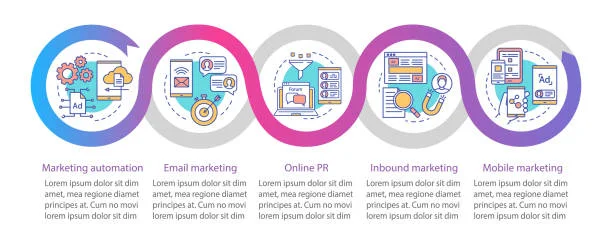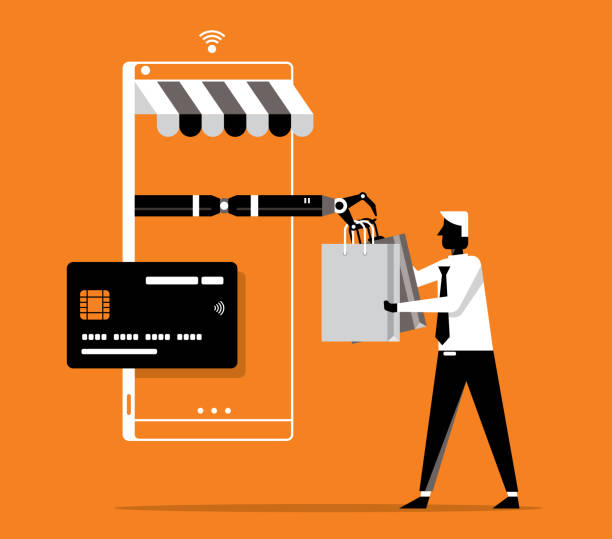Why Your Online Store Needs eCommerce Automation Software?

Running an online store today isn’t what it used to be, even a few years ago. The eCommerce landscape has become fast-paced, competitive, and packed with evolving customer expectations. With millions of products just a click away, buyers want speed, accuracy, personalized experiences, and seamless service. As an online store owner, juggling inventory, orders, marketing, customer support, and data analysis manually can quickly become overwhelming. This is where eCommerce automation software steps in as a total game-changer.
From saving countless hours of tedious work to skyrocketing sales through smarter marketing, automation software can revolutionize how you do business online. Ready to see why your store needs it today? Let’s get started.
How Does eCommerce Automation Software Work?

Simply put, eCommerce automation software is a tool or a set of tools designed to automate repetitive, time-consuming tasks that are part of running an online store. Think of it as your digital assistant that handles everything from inventory tracking to order fulfillment, marketing campaigns, customer communication, and even detailed reporting—all with minimal manual intervention.
Rather than manually updating stock counts, sending shipping confirmations, or crafting emails one by one, automation software connects all these dots and works tirelessly behind the scenes. It uses predefined rules and triggers to execute tasks automatically. For example, when a product sells out, it can automatically update your inventory and alert you to restock. Or it can send a personalized thank-you email to customers the moment they complete a purchase.
What makes this software truly powerful is its ability to integrate with various platforms like Shopify, WooCommerce, Amazon, eBay, email marketing tools, payment gateways, and even customer support systems. This interconnectedness creates a smooth workflow that frees up your time and resources, so you can focus on growing your business.
The Growing Complexity of Online Stores
Online stores today aren’t just simple digital catalogs; they are dynamic ecosystems involving multiple channels, fluctuating stock levels, complex shipping logistics, and high customer expectations. As businesses scale, the volume of daily tasks grows exponentially, and managing everything manually becomes nearly impossible.
Consider this: a small store might receive a handful of orders a day and can manage with manual processes. But what happens when orders jump to hundreds or thousands? How do you keep every order accurate, every shipment on time, and every customer happy without burning out?
Additionally, selling on multiple platforms—your website, Amazon, eBay, social media marketplaces—adds layers of complexity. Inventory must sync across channels, prices must be updated in real time, and customer queries must be handled promptly.
This is why the traditional “do-it-all-yourself” approach quickly shows its limitations. Automation is no longer a tech fad; it’s the backbone of successful modern eCommerce operations.
Key Benefits of eCommerce Automation Software

Saving Time and Reducing Manual Work
One of the most obvious benefits of eCommerce automation software is time savings. If you’re spending hours every day manually processing orders, updating inventory, and managing customer inquiries, automation can shave off those tedious tasks.
Setting up a system that automatically updates inventory counts as orders come in or generates shipping labels the moment an order is placed. You don’t have to lift a finger for those repetitive chores anymore. This not only frees your time but also allows your team to focus on higher-value activities like improving product listings, brainstorming marketing strategies, or enhancing customer service.
Reducing manual work also lowers the risk of human error. Manually entering product data or orders can lead to costly mistakes wrong shipments, stockouts, or lost revenue. Automation ensures these tasks are executed flawlessly every time, maintaining smooth operations.
Enhancing Customer Experience
Your customers expect smooth, fast, and personalized experiences. Automation makes this possible on a large scale.
For instance, automated email marketing campaigns can send personalized product recommendations based on previous purchases or trigger cart abandonment emails that gently remind customers about items left behind. Automated order tracking notifications keep customers informed every step of the way, building trust and reducing anxiety.
Fast and reliable communication is a key factor in customer satisfaction, and automation helps maintain that speed and consistency. Plus, quick responses and accurate order fulfillment lead to positive reviews and repeat business.
Increasing Sales and Revenue
Automation software doesn’t just save time; it actively helps increase your revenue.
Automated marketing tools enable you to target customers with the right message at the right time—be it through email, SMS, or social media ads. By segmenting your audience and personalizing campaigns, you can boost conversion rates dramatically.
Furthermore, inventory automation prevents overselling or stockouts, ensuring you don’t lose sales opportunities or disappoint customers. Order fulfillment automation speeds up delivery times, improving customer loyalty and reducing returns.
In short, automation helps you sell smarter, faster, and with fewer mistakes, directly impacting your bottom line.
Minimizing Errors and Improving Accuracy
Errors in eCommerce can be costly, from shipping the wrong products to updating incorrect stock levels. These mistakes erode customer trust and lead to returns, refunds, and lost revenue.
Automation software standardizes and streamlines processes to minimize these errors. When a system automatically handles data entry, order confirmations, or shipping label generation, it follows precise rules without slipping up. This consistency reduces the chances of human error and keeps your store running smoothly.
By improving accuracy in every step, automation protects your brand reputation and boosts overall efficiency.
Core Features of eCommerce Automation Software

Inventory Management Automation
Keeping track of inventory is one of the toughest tasks in eCommerce, especially when selling on multiple platforms. Automation software helps by syncing stock levels in real-time across all sales channels. When a product sells on your website, it immediately reflects on Amazon, eBay, or any other marketplace you use.
This prevents overselling, stockouts, and the headache of manual inventory reconciliation. Some advanced tools also forecast inventory needs based on sales trends, helping you reorder stock just in time to meet demand.
Order Processing and Fulfillment Automation
One of the most time-consuming parts of running an online store is managing orders — from receiving them, verifying payment, packing, and finally shipping. Automation software streamlines this entire process by connecting your store with fulfillment centers, shipping carriers, and payment gateways.
For example, once an order is placed and payment is confirmed, the software can automatically generate packing slips and shipping labels, notify warehouse staff or third-party logistics providers, and send tracking information directly to customers without any manual input. This reduces the turnaround time significantly and minimizes errors like wrong shipments or missed orders.
Additionally, many systems support dropshipping automation, where the software directly forwards orders to suppliers. This eliminates the need for you to handle physical inventory, allowing you to scale quickly and efficiently.
Automated Marketing Campaigns

Marketing is crucial for growing any eCommerce business, but manual marketing tasks can be overwhelming and inefficient. Automation software transforms how you reach your audience by automating repetitive tasks such as email campaigns, social media postings, and ad retargeting.
Imagine having a tool that sends personalized emails to customers based on their browsing history, purchase behavior, or even birthdays. It can trigger cart abandonment emails that recover potentially lost sales or schedule flash sale announcements without you lifting a finger.
This level of personalization and timely communication nurtures leads, boosts conversion rates, and builds lasting customer relationships. You get to engage customers consistently and strategically without being tied to your computer all day.
Customer Relationship Management (CRM)
Understanding your customers’ behavior, preferences, and purchase history is essential to providing personalized experiences. Many eCommerce automation platforms come with integrated CRM features or seamlessly connect to third-party CRM tools.
This integration allows you to track customer interactions, segment your audience, and automate personalized communications. For example, you can automatically send follow-up emails asking for product reviews, offer special discounts to loyal customers, or identify customers who haven’t bought in a while and run re-engagement campaigns.
A well-managed CRM combined with automation helps convert first-time buyers into repeat customers and loyal brand advocates, which is the secret sauce of long-term business growth.
Reporting and Analytics Automation
Data-driven decisions are the foundation of successful eCommerce. Automation software collects and analyzes vast amounts of data daily, from sales performance to customer behavior and marketing ROI.
Automated sales automation and reporting tools generate detailed, real-time reports and dashboards without requiring manual data entry. You can easily spot trends, identify your best-selling products, monitor inventory turnover, and assess the effectiveness of marketing campaigns.
With these insights readily available, you can make quick, informed decisions to optimize pricing, stock levels, or promotional strategies, keeping your business agile and competitive.
How Automation Transforms Daily Operations

Streamlining Inventory Updates
Manual inventory management is not only time-consuming but prone to errors. Automation solves this by providing real-time synchronization across all your sales channels.
Every time a product sells, the software automatically deducts the stock from all linked platforms, whether it’s your online store, Amazon, or a physical location. This prevents overselling — a frustrating experience for customers and a headache for sellers.
Advanced systems even provide inventory alerts when stock is running low, helping you reorder before running out. This seamless flow of data keeps your stock levels accurate, reduces backorders, and improves customer satisfaction.
Simplifying Order Management
Order management can become chaotic when handling multiple orders from different channels, especially during sales spikes or holiday seasons.
Automation software centralizes all your orders into a single dashboard, providing a clear overview of order status, payment confirmation, and shipping updates. This eliminates the need to log into multiple platforms and manually track orders.
Automated workflows can route orders to the appropriate fulfillment centers or shipping providers based on rules like location or product type, further speeding up processing times. Your team can focus on exceptions or customer issues rather than routine tasks.
Automating Customer Support and Communication
Customer support is a make-or-break element for eCommerce success. Customers expect quick responses to inquiries about orders, returns, or product details.
Automation tools enable you to set up chatbots, auto-responders, and FAQs that instantly address common questions 24/7. For more complex issues, the system can prioritize tickets or route them to the right team member.
Moreover, automated notifications keep customers informed about their order status, shipping delays, or promotional offers, reducing uncertainty and building trust. These consistent touchpoints improve customer satisfaction and reduce the workload on your support team.
Handling High Order Volumes
As your online store grows, the number of daily orders can become overwhelming. Manually processing hundreds or thousands of orders is not scalable and leads to delays, errors, and frustrated customers.
Automation software allows your store to handle large order volumes efficiently by streamlining order confirmation, packing, and shipping workflows. It helps maintain speed and accuracy during peak times like Black Friday, holidays, or product launches, ensuring you never miss an opportunity.
Managing Multichannel Selling
Selling on multiple platforms increases your reach but also adds complexity. Without automation, it’s easy to lose track of inventory, pricing, and orders across different marketplaces.
Automation tools synchronize inventory, pricing updates, and order management across all your channels. This means when an item sells on one platform, stock levels update everywhere instantly, and orders are routed correctly regardless of where they originate.
This centralized control saves hours of manual reconciliation and reduces costly mistakes, making multichannel selling much more manageable.
Coping with Customer Expectations for Fast Delivery
Fast shipping has become a baseline expectation for online shoppers. Meeting this demand requires quick, error-free order processing and accurate shipping information.
Automation software accelerates fulfillment by integrating with shipping carriers and generating labels immediately upon order confirmation. Real-time tracking updates keep customers informed and reduce inquiries.
By optimizing logistics with automation, you can offer faster delivery options and improve customer satisfaction, leading to positive reviews and repeat business.
Choosing the Right eCommerce Automation Software

Factors to Consider
Choosing the right automation software for your online store isn’t a one-size-fits-all decision. It requires careful consideration of your business needs, budget, and growth plans. Here are some key factors to keep in mind:
- Ease of Use: A user-friendly interface ensures that you and your team can adopt the software quickly without steep learning curves. If your team struggles with complicated systems, automation benefits get lost.
- Integration Capabilities: Your automation software should seamlessly connect with your existing eCommerce platform (Shopify, WooCommerce, Magento, etc.), payment gateways, shipping providers, and marketing tools. The more integrations it supports, the more streamlined your workflow will be.
- Feature Set: Identify what tasks you want to automate—inventory, orders, marketing, CRM—and make sure the software covers those needs. Some tools specialize in marketing automation, while others excel at inventory or fulfillment.
- Scalability: Choose software that can grow with your business. If you plan to expand product lines, add sales channels, or increase order volume, the software should handle this growth without requiring a costly upgrade or switch.
- Customer Support: Reliable customer service and training resources are critical. Look for vendors who offer onboarding help, responsive support, and active user communities.
- Budget: Automation software ranges from free plugins for small businesses to enterprise-level solutions costing thousands per month. Make sure the software’s ROI justifies its cost.
Integration with Existing Platforms
One of the biggest advantages of eCommerce automation software is its ability to integrate smoothly with platforms you already use. Whether your store runs on Shopify, WooCommerce, BigCommerce, or Magento, seamless integration is key to avoiding disruptions.
Look for automation tools that offer native integrations or use third-party connectors like Zapier. The goal is to create a unified system where data flows effortlessly between sales, inventory, marketing, and shipping channels.
This integration reduces manual data entry, prevents synchronization errors, and allows you to manage your entire store from a centralized dashboard.
Scalability and Customization
Every online store has unique needs. The right automation software should offer customization options to tailor workflows and automation rules to your specific business processes.
Additionally, scalability is essential. You don’t want to outgrow your software in six months. Choose a platform that can handle increased product SKUs, more sales channels, higher order volumes, and expanded marketing activities.
Cloud-based solutions often provide better scalability as they allow you to upgrade resources and features on demand without downtime.
Case Studies: Successful Use of Automation in Online Stores
Small Business Success Story
Sarah, who runs a boutique skincare store on Shopify. Before automation, Sarah spent hours daily managing orders, updating inventory, and sending promotional emails. She often missed out on potential sales due to delayed responses and stock discrepancies.
After implementing an eCommerce automation platform, Sarah saw immediate benefits. Inventory synced in real-time across her website and Instagram Shop, reducing overselling. Automated abandoned cart emails recovered 20% of lost sales. Shipping labels generated automatically, speeding up fulfillment.
With routine tasks handled by automation, Sarah focused on product development and customer engagement, doubling her revenue within six months.
Enterprise-Level Automation Implementation
Large retailers face a different scale of complexity. Take TechGear, a multinational electronics seller with thousands of SKUs and multiple warehouses worldwide.
TechGear implemented a sophisticated automation suite that connected inventory management, order processing, and customer service across all sales channels. Using AI-powered demand forecasting, TechGear optimized stock levels, preventing overstock and shortages.
Automated marketing campaigns tailored to customer behavior increased repeat purchases by 30%, while real-time order tracking reduced support calls by 40%.
This comprehensive automation strategy allowed TechGear to maintain operational excellence while expanding into new markets seamlessly.
Future Trends in eCommerce Automation

AI and Machine Learning in Automation
Artificial intelligence (AI) and machine learning are becoming integral to eCommerce automation. These technologies analyze customer data to predict buying behavior, optimize pricing, and personalize marketing efforts at scale.
For instance, AI-powered chatbots provide natural, human-like customer service 24/7. Machine learning algorithms can forecast demand based on seasonal trends, helping businesses stock smarter and reduce waste.
This intelligent automation means stores can offer hyper-personalized shopping experiences while operating with greater efficiency.
Voice Commerce and Automation
Voice-activated shopping via smart speakers like Amazon Alexa and Google Assistant is on the rise. Automation software is evolving to support voice commerce, enabling customers to place orders, check status, and receive product recommendations hands-free.
This trend means businesses need automation tools that integrate with voice platforms, managing orders and customer interactions seamlessly across multiple touchpoints.
Predictive Analytics and Personalization
Predictive analytics uses historical data to forecast future trends. Combined with automation, it empowers businesses to deliver personalized offers, optimize inventory, and enhance customer retention strategies.
Automation platforms increasingly include predictive features, enabling stores to act proactively—launching targeted promotions, adjusting pricing dynamically, or stocking products before demand surges.
Getting Started with eCommerce Automation Software
Steps to Implement Automation
- Assess Your Needs: Identify repetitive tasks that consume time and resources.
- Research and Select Software: Based on your needs, budget, and platform compatibility.
- Plan Integration: Ensure the software connects with your existing tools.
- Set Up Automation Rules: Define triggers and workflows for tasks like order processing or marketing emails.
- Test Thoroughly: Run pilot tests to catch bugs or process gaps.
- Train Your Team: Provide training to maximize software adoption and usage.
- Monitor and Optimize: Regularly review automation performance and tweak rules to improve efficiency.
Training Your Team for Automation
Adopting automation isn’t just about technology—it’s about people. Your team needs to understand how the software works, how to manage exceptions, and how to leverage automation insights.
Provide ongoing training and support to ensure your staff feel confident. Encourage feedback to identify challenges and opportunities for improvement.
With the right mindset and training, automation becomes a powerful ally rather than a source of anxiety.
Conclusion
In today’s fast-evolving eCommerce landscape, automation software is no longer just a helpful tool—it’s a critical component for success. From saving countless hours of tedious manual work to enhancing customer experience and boosting revenue, the benefits are clear and transformative. Automation streamlines inventory management, accelerates order processing, and enables personalized marketing efforts that build lasting customer relationships.
Moreover, automation reduces costly errors and empowers businesses to scale efficiently across multiple channels without losing control or quality. Whether you run a small boutique or a large multinational enterprise, the right automation software can optimize operations, increase profitability, and future-proof your online store against growing customer expectations.
The future promises even more exciting innovations like AI-driven personalization, voice commerce integration, and predictive analytics—all powered by automation technology. Starting your automation journey today positions your store to thrive, no matter what challenges come next.
If you haven’t explored eCommerce automation yet, now is the perfect time. The competitive edge it provides is invaluable, and the peace of mind it delivers is priceless.
FAQs
1. What types of tasks can eCommerce automation software handle?
Automation software can manage inventory updates, order processing, shipping label generation, marketing campaigns, customer communications, CRM activities, and detailed reporting, among others.
2. Will automation software work with my existing online store platform?
Most automation tools are designed to integrate seamlessly with popular platforms like Shopify, WooCommerce, Magento, and others. It’s important to verify compatibility before choosing a solution.
3. Can automation software help increase my online store sales?
Yes! Automation improves marketing personalization, reduces cart abandonment, speeds up order fulfillment, and enhances customer experience—all factors that drive higher sales and revenue.
4. Is eCommerce automation expensive to implement?
Costs vary depending on the software’s features and scale. Many affordable options are available for small businesses, while enterprises may invest in advanced solutions. The ROI typically justifies the expense through time savings and increased sales.
5. How do I ensure my team adapts to automation software?
Providing comprehensive training, clear communication about benefits, and ongoing support encourages smooth adoption. Involving your team in the setup process also helps reduce resistance.







